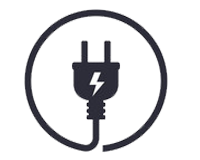The only good thing in this region was the abundance of groundwater wells. “There were no mills or stoves for baking. No electric generators for six months.We made beds of barrels and wood pieces to avoid scorpions,” further narrates Mansour.
With time, the Ministry of Health allocated one ambulance and two paramedics to the oasis. “They were transferring the persons bitten by scorpions for treatment in Dakhla Oasis, but many died on the way,” recalls Mansour
He says slowly Abu Minqar started to bustle with life; someone built a flour mill, although bakeries were built ten years later. According to Mansour, the introduction of bakeries excited women that baked bread almost daily.
And there was a challenge of poor sanitation, according to Wafaa, Mansour's sister-in- law. “We would carry laundry water on our shoulders and dump it outside,” Wafaa says
After the 2011 Revolution, a diesel generator was extended to this oasis to supply power only at night. But residents grumbled and called for an end to the load-shedding.
he situation improved somewhat with the introduction of solar power in the oasis, enabling homes to have power supply for 20 hours a day.
The first electrical device bought by Mansour Mahdy’s family 15 years ago was a small refrigerator. Now , his house has all the essential electrical appliances.







